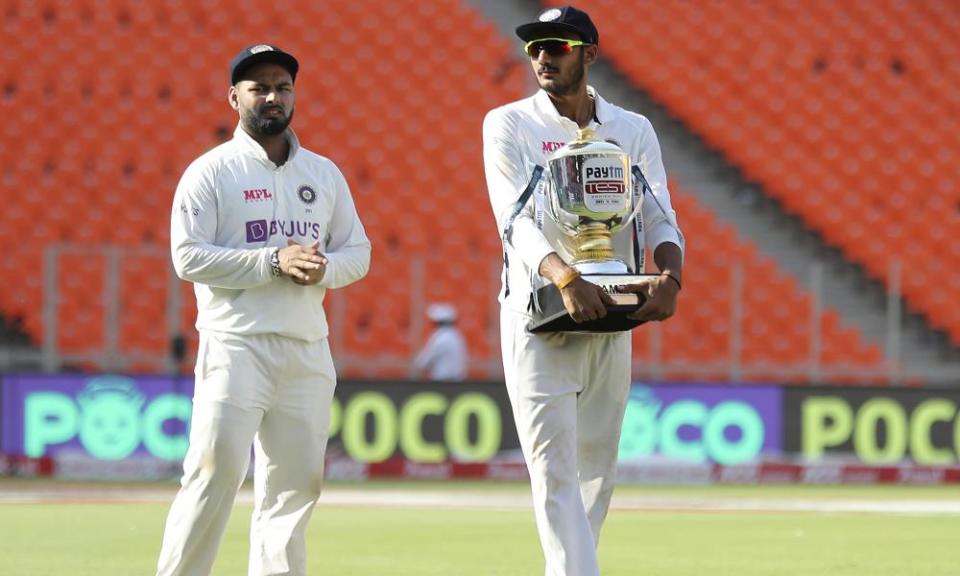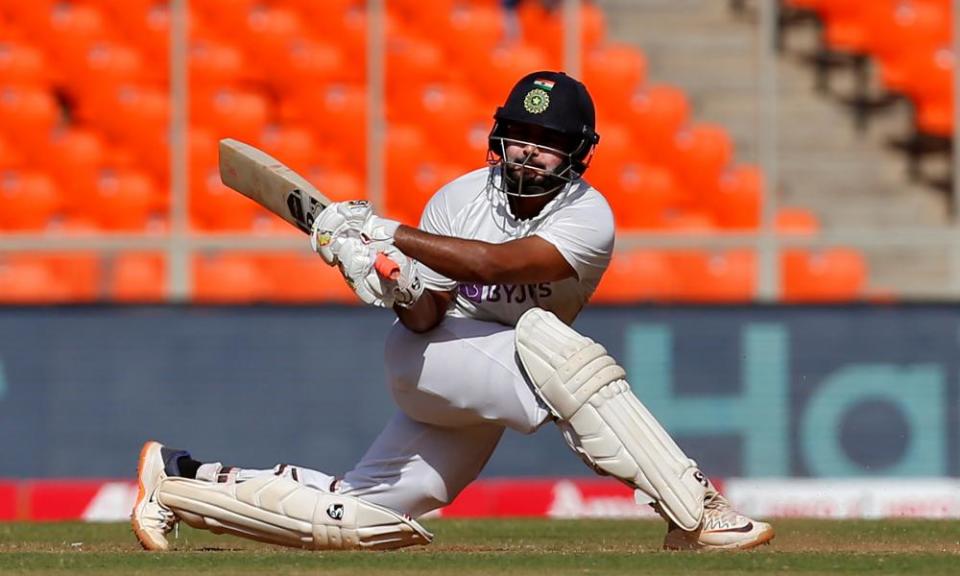India's winning bubble firmly intact, while England have let theirs burst

The core of the Indian team that beat England 3-1 has been in a bio-bubble since August. Life in the gilded cage began in the United Arab Emirates for the Indian Premier League, moved to Australia for the tour that never seemed to end, and shifted to India for the home series against England.
This may seem like a long time - and it has felt like it for the players - but truth be told they have been in a bubble of their own making for much longer, as long as Snow White was in slumber, just with no dwarves threatening to come to the rescue.
Virat Kohli and Ravi Shastri, as captain and coach, have cocooned this team from the rest of the world as much as humanly possible. In a country where everyone wants a piece of their cricketing heroes, the Indian team has wound itself into a tightly knit unit because they believe they best know what is needed to succeed.
Related: England's young guns learning on the job speaks to a systemic failing | Andy Bull
The distractions of the wider world have caused more than one Indian cricketer to lose his way, and the opinions of experts, coaches and a billion fans has caused self doubt in even the most self-reliant cricketers. Not this team. Not this captain. Not this coach.
They believe they have everything they need to succeed within the confines of the players, the coaching staff and the support staff. And, on current evidence, it is hard to dispute this.
The strongest example of this is Rishabh Pant. Ever since he was brought into the mix, the team has insisted that he is not merely a good player, he is someone who is going to change the cricketing landscape.
While it was blindingly obvious that Pant had attacking batting chops, there was little evidence that he believed in shot selection. He looked as though he wanted to hit every ball for six, and that does not work even on PlayStation. More critically, behind the stumps he was often a mess, especially in comparison with the immaculate Wriddhiman Saha, whom he had replaced.
But with the right sort of kick up the rear end from his seniors and the coach, Pant “worked his backside off,” as Shastri puts it, and went from roll poly to bundle of muscle. With fitness came runs, runs brought belief, belief begat awareness and suddenly the caterpillar had turned into a creature that floated like a butterfly and stung like a bee.

In the final Test of the series, Pant played two innings in one. With India so far behind the game that England felt like they had more than a sniff, Pant batted with stoicism and singleminded purpose.
He was India’s gatekeeper, holding Jimmy Anderson and Ben Stokes, in the middle of a spell of sustained collaborative brilliance and pressure, at bay. At some point, as human beings do in the 37-degree Ahmedabad heat, the duo wilted, and there was precious little to follow.
Threat neutralised, Pant turned aggressor, and while the image of him playing a reverse-ramp off Anderson will be most replayed, it was the expression of Ben Stokes at mid-off and Anderson returning to his bowling mark that told the full picture. Stokes, the talisman who could do it all, had just seen someone do something he wouldn’t try. Anderson, the banker who conceded less than a run an over in his first spells, had just been mugged.
Pant’s hundred and Washington Sundar’s agonising near-miss were born in India’s bubble life, the one they had created for themselves, not the one that had been thrust on them. Here were two cricketers that nobody outside the inner circle believed could play like this. And yet, they just did.
If Pant’s audacity against Anderson was a sign of India’s belief, it was the kind of shot that fans of the team had been waiting for. When England landed in India for four Tests, they would not have expected to win the series. When they took a 1-0 lead, they had done well, but India’s fans do not brook the thought of their team losing at home.
Which is why it baffled supporters that England were resting and rotating players, flying their finest home and back, while attempting to beat the No 1 Test team in their backyard. While there is an understanding that these unique times call for certain measures, to maintain physical strength and mental balance over a period of time, the fact that England would be full-strength for the white ball part of the tour, and uniformly available for the IPL, left Indian fans feeling disrespected.
When the third Test ended in two days, Joe Root said “I almost feel like they [fans] have been robbed.” And he was right. India’s fans did feel shortchanged, but not by the pitches. They felt like England had not played well enough to take matches to five days, like England had not cared nearly enough to put themselves on the line and fight.
At the end of the day, the Indian team will take their hard earned place in the World Test Championship final, and fans will take the 3-1 scoreline.
That’s another thing this team has learned in its bubble. You don’t wait for something to come to you. When you want it badly enough, you go out there and take it.

 Yahoo Finance
Yahoo Finance 